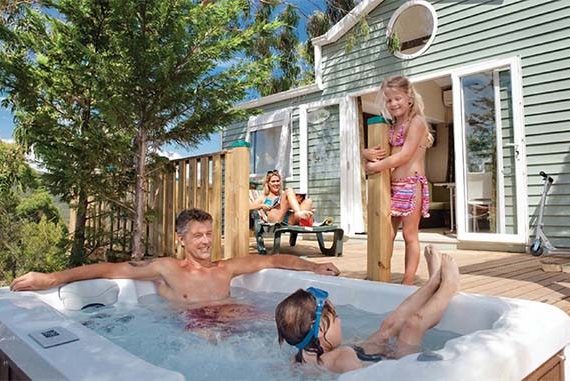Provence
Aix-en-Provence is a magnificent example of the Provençal art of living so admired by the rest of the world. The boulevards shaded by majestic sycamores, the streets bordered by rich private residences, the discreet squares ornamented with beautiful fountains and garnished with welcoming sidewalk cafés, inevitably seduce those who take the time to linger. Cézanne made it his city, and the surrounding countryside inspired some of his greatest impressionist masterpieces.
Avignon is an ancient riverside fortress city situated on the Rhône river. The famous bridge of the nursery rhyme – Sur le Pont d’Avignon – projects oddly into the river, its broken arches stretching just half way across. The uninhabited and immense Palais des Papes or Papal Palace is the most important landmark after the bridge. Today, elegant designer boutiques and jewellers, famous restaurants and fine mansions stand just a few steps away from crowded squares, cheap brasseries and cobbled backstreets.
Gordes is built on the foothills of the Monts of Vaucluse, facing the Luberon, and is one of the best-known hilltop villages in the region, and one of the most beautiful in France. Its houses and buildings of white stone root themselves into the sharp cliff of the mountain, and its labyrinth of “calades” (narrow cobblestone streets) give the village a special charm.
Le Pont du Gard, at Remoulins, two thousand years after its construction, is still a veritable masterpiece, as much for the technical prowess involved, as for its simple beauty. This monument has been registered as a World Heritage of Man site since 1985.
Arles is famous for its Roman Arena and Theatre which are unique as they are integrated into the houses and buildings of the town. The streets of this city are truly medieval in character: narrow and winding between ancient buildings. Van Gogh stayed here for 14 months, during one of his most prolific periods, when he produced 200 paintings.
St Rémy de Provence a small town located at the foot of the Alpilles, has kept its traditions and personality. The festive events give rhythm to the town: the bull fights and other bull related events, the sheep migrating festival, the horse fair, concerts and exhibitions. The lively streets of the town centre have private residences with magnificent facades dating from the 17th and 18th centuries.
Côte d’Azur
Cannes, Antibes and Menton draw energy from the thriving city of Nice. Antibes boasts a network of pretty narrow streets either side of the Marché Provençal. The tropical peninsulas – Cap Ferrat and Cap Martin – frame the tiny principality of Monaco famous for its glamour and for the Grimaldi family who have ruled the principality for 700 years. Just behind the mediterranean coast, medieval villages mushroom out of the nearby hills, offering the visitor a taste of old Provence. There are more than 120 hill-top villages, villages perchés, scattered all over the Côte d’Azur. Each has its own particular charm and merit.
Grasse, is renowned for its perfume factories, galleries and souvenir shops.
Fayence a definitive 18th century Provençal town, offers spectacular views.
Mougins, St Paul, Vence and Le Bar-sur-Loup medieval villages perched on top of a rock, are all worth a visit.
Gourdon, opposite Le Bar-sur-Loup, higher up on the mountain, on an even steeper rock, is visible from just about everywhere from Cannes to Nice.
Roquebrune-sur-Argens, is an ancient town sitting amidst bunches of new villas. It is located in an expansive pine forest, accentuated by the beautiful red cliffs of the Rocher de Roquebrune, and cooled by the Argens river. From the village there’s a panoramic view out across the Argens plain to the north, with low mountains in the distance. Roquebrune retains a lot of charm with narrow streets between the old buildings and a 16th century church.
Fréjus, a mixture of Roman and medieval architecture, is a large sprawling town. The old Roman harbour now lies well inland and it still has its Roman arena. The Cathedral is built of lovely old stone and is set in a pretty square.
Saint Tropez is still very popular with tourists. It remains famous for the line of yachts along the quayside, the rows of terraced cafés overlooking the bay, the parades of strolling tourists and the slow cruising expensive cars in the south of France. Behind the cafés, the small streets and old buildings are very picturesque.
Gorges du Verdon is one of France’s most spectacular natural wonders, a Grand Canyon-style chasm roaring with milky-green water and edged by one of Europe’s most hair-raising drives. The drive goes along part of the Route Napoléon.
Castellane is located part of the away along this beautiful but winding drive in the heart of the Gorges du Verdon. Castellane’s main feature is a chapel, built on top of a 300m high rock that goes straight up from behind the town hall in the old centre. It is floodlit at night.
Moustiers Ste Marie on the other side of the Gorges du Verdon is a gorgeous village on the edge of a small stream in a steep narrow ravine. It is famous for its ceramic “faiences” and has narrow medieval streets and vaulted passages.
Tags: camping cote d azur, campsites cote d azur, cote d azur camping, camping cote d azur pas cher, camping cotes d azur, french riviera, côte d’azur, holidays in côte d’azur, provence alpes côte d’azur
www.frenchriviera-tourism.com
www.provenceweb.fr
www.beyond.fr

